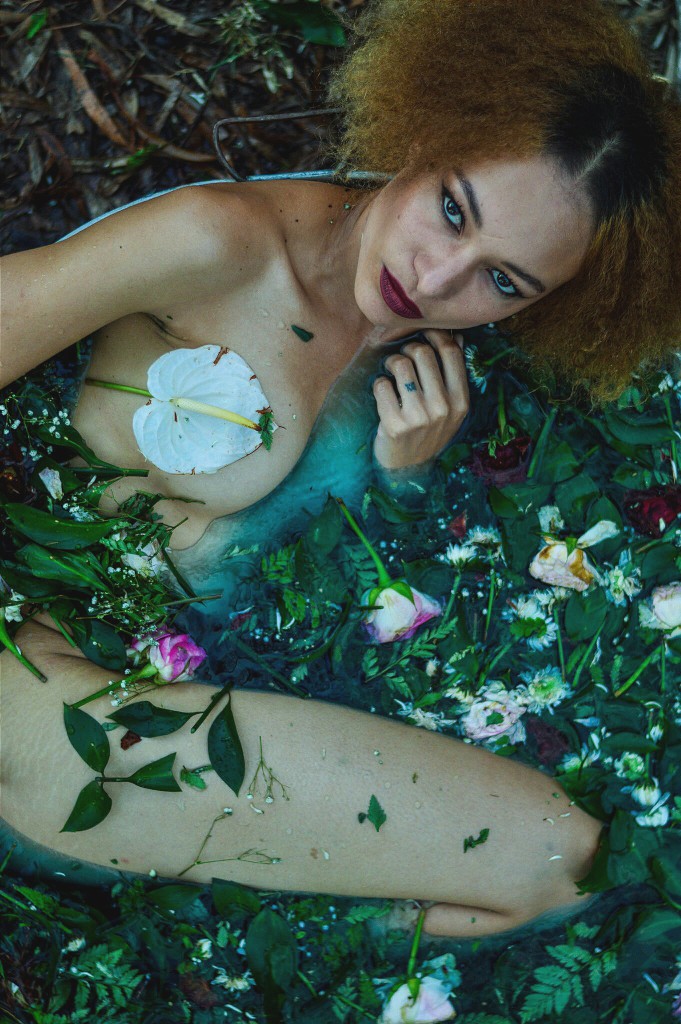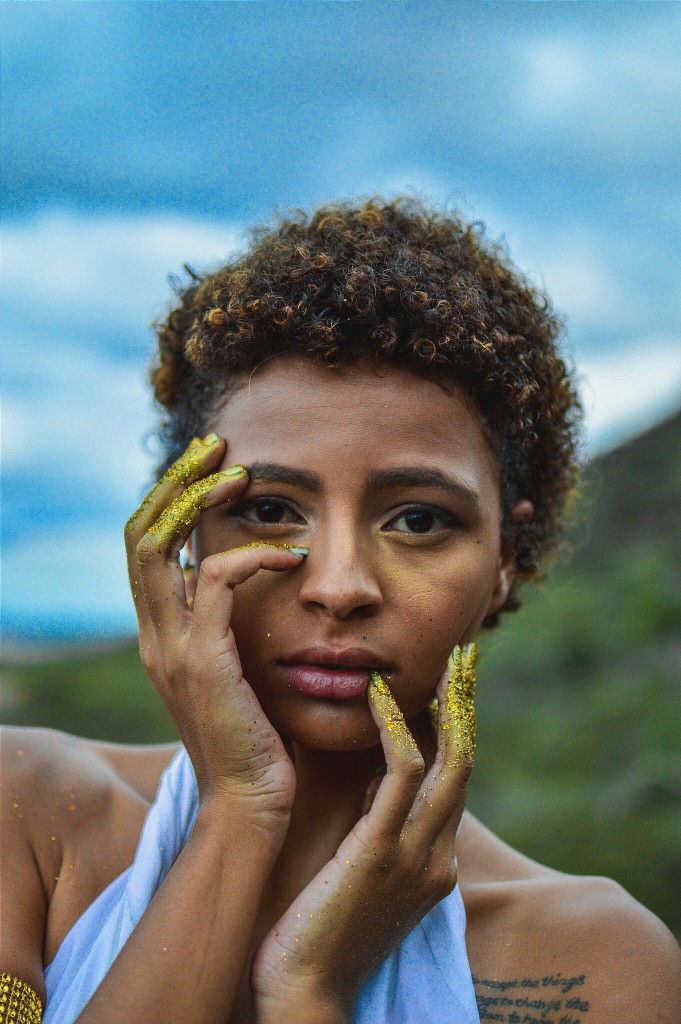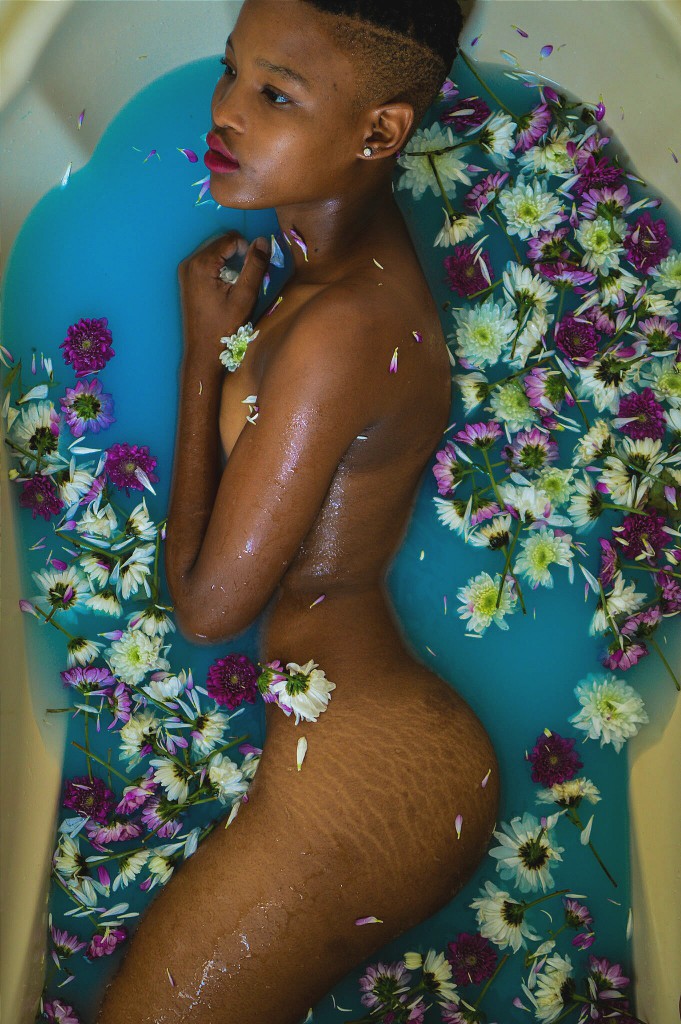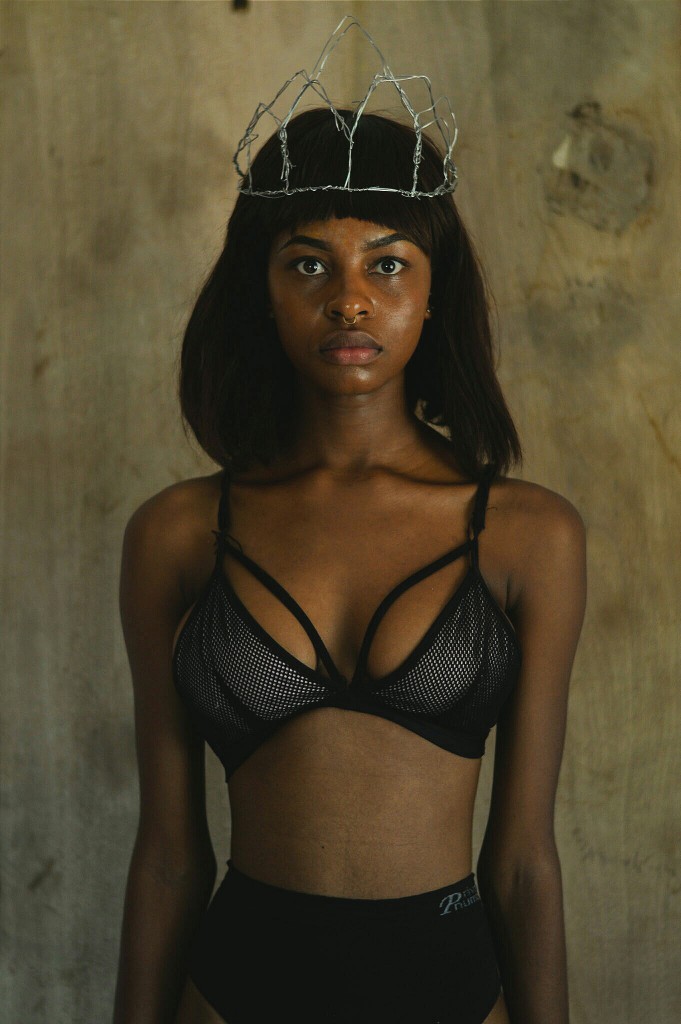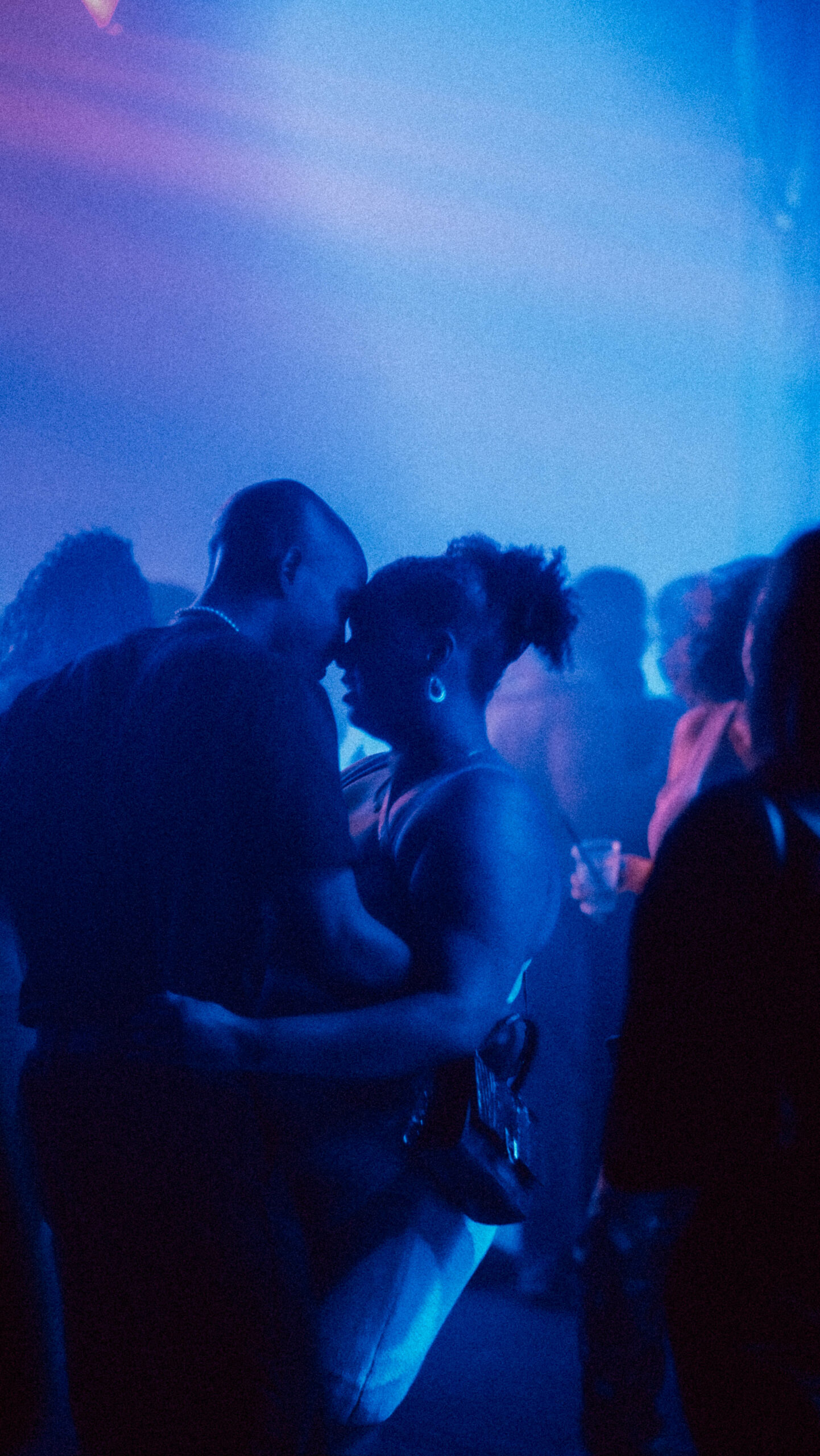
gal-dem first came across Van de aarde after their photography was featured by Afropunk. “Van de aarde (aka Call Me Van) is a freelance editorial photographer from Botswana. Not much else is known about the photographer, but judging by their work, the artist seems to be attracted to photographing form and honesty beauty. Much of their work are portraits, experimental and traditional, taken on 35mm film,” wrote Erin White.
She was right, the images are captivating – women of colour looking raw and beautiful in high contrast, theatrical poses. It became gal-dem‘s mission to find out more about the elusive photographer.
Could you tell us a little about your background?
I’m a 24-year-old photographer from a small town called Molepolole in Botswana. I was raised in the capital city, Gaborone, where I went to school. I attended university in South Africa
I prefer to keep myself to myself, and only share my photography. Van de aarde is not my real name. I have many reasons for this choice, but fundamentally it’s because it allows me to be creative without having to think or worry about the pressures that come with people actually knowing who you are. I cherish this freedom a lot.
When did you begin taking photographs?
I began taking pictures at the end of 2014, but that was on my cellphone. They weren’t weren’t thought out much – they were of clouds, interesting landscape scenes or architecture. But right at the end of 2014 I got a camera as a Christmas gift: a Nikon D3200, and I neglected it for a few months not knowing how to use it and not really wanting to.
My younger brother, who is also a photographer, had already began learning about photography and it was through him that I developed the love for it. I watched his work and grew more and more interested every day, and on Instagram I began following accounts of quality photographers. Eventually, after spending a few months assisting my brother with his shoots, I decided to join in, and I did my first shoot early May 2015.
At the time my brother and I were going to school together and we became a team. We worked together for the rest of the year; teaching each other and growing together. I took a break from photography before Christmas and only resumed at the beginning of February, which was the first time I did a shoot by myself.
My photography style has changed from not working with him, and because of the pressures of failing at university. I’ve also recently ended a long-term relationship, and I’ve been suffering from depression.
What are some of your favourite images, and why?
I don’t think I can say I have a select few images that I can call my favourites. I prefer to look at other photographers work – but while there are some images I have seen that I love, they haven’t left a lasting imprint.
I do have quite a lot of photographers who influence me in many different ways. I mainly know them from Instagram. They’ve helped me to understand basic things like locations, models and symmetry, as well as teaching me about doing what you love; what you feel; what you think. I’ve also learned how to see or create beauty in a picture; what to look for to make sure a picture is not only nice but speaks to the viewer with more than just what they see.
I’ve been influenced to consider the person I’m are shooting; to realise they aren’t a mannequin and that they also have a mind – usually as creative one as your own. They may not have the ability to take the pictures, but that doesn’t mean they dont have ideas.
I was even lucky enough to get in contact with Erika Astrid at a low point in my life, and she gave me advice and a reason to keep going. I owe a lot to her and her photography. 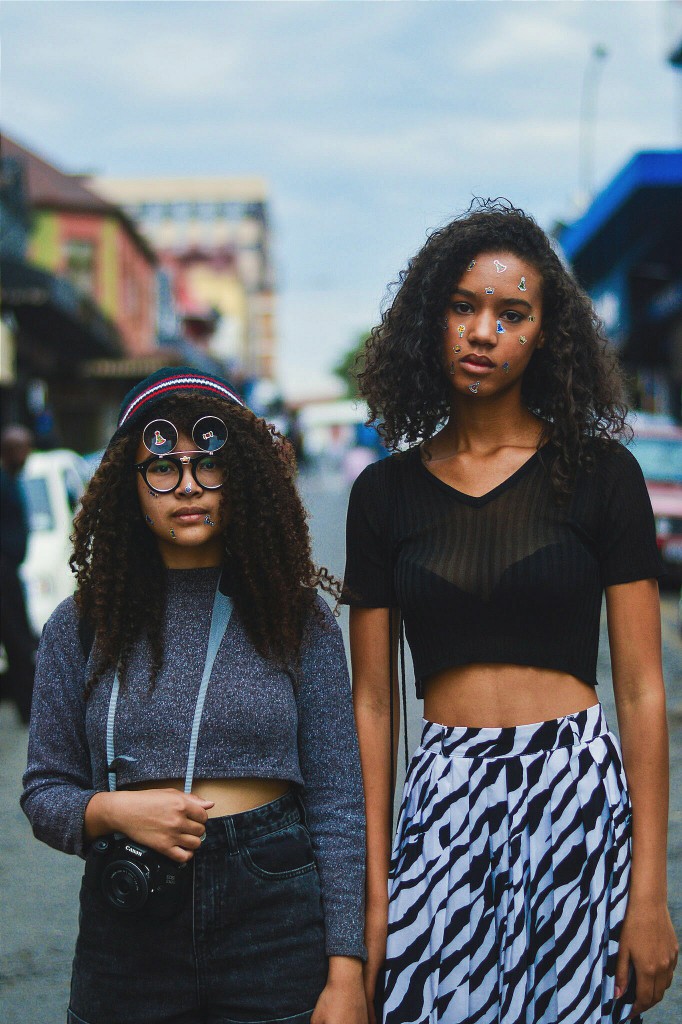
Were you excited when you saw you had been featured by Afropunk?
When I first saw the Afropunk feature I thought it was a prank. When I realized it wasn’t, I was left wondering, why me? I felt like I hadn’t been taking photos for long enough to gain recognition.
I began getting congratulations from friends and family and on Instagram and Facebook and gained tonnes of followers.
The next few days were a blur, I was dizzy most of the time unsure of what to do. I felt I was dreaming, and some nights I was worried I would wake up the next morning back in reality.
It was more the fear that my work wasn’t good enough. I haven’t been doing this for social media fame, but the fact that others were being inspired by my work made me feel a lot better about what I was doing. I was super happy and excited, and my parents and siblings were even more so!
Your pictures are often usual in their composition. How do you come up with ideas?
My ideas concepts are usually drawn from something I have seen from another photographer. I haven’t been doing this enough to say I have a style of my own. I borrow and take here and there, and I give credit when I have taken the whole idea.
Sometimes seeing a certain kind of picture helps me think of another way to do it. I also try and do things that people are afraid of, but that I also enjoy. I don’t do it to be a rebel. I try do what I think will work, and not have to mould it around what I feel people will like. There’s no fun in doing the expected.
Some of your images are really raw – for instance in the image above, you haven’t photoshopped out your model’s beautiful stretch marks, which many other photographers would. Why is that?
I have never been a fan of photoshopped images. I can understand removing a few things here and there, depending on what they are, but overall I feel that there is no need. Magazines are just lying to us. At most I will remove acne, and sometimes I even leave that.
It’s part of how we, as people, look, and why should we hide it? I’ve never thought stretch marks were a bad thing and while I didn’t go out to try and push the message that “I love stretch marks and feel everyone should embrace them”, that’s simply what I feel.
I am also not a big fan of make-up. I usually ask for my models not to wear make up – or to wear minimal make up. I feel that, just as with photoshop, there is a time and place for it, but when you’re trying to show people who you really are, or trying to depict people authentically then they should be natural.
I do understand that there is a time and place for make up and I’m not saying women should never wear make-up, I just feel that they shouldn’t feel the need to wear it daily, unless they want to!
You seem to take quite a lot of pictures of women of colour. Do you think black women need more representation in the creative industries?
When I first started taking photographs I didn’t realise the lack of black women in photography – or rather, that people prefer to photograph other women because its the norm.
Eventually, as I learnt how to use my camera and the process of doing photoshoots, I noticed it. From my understanding, women of colour are sometimes made to feel that they shouldn’t be doing photoshoots.
I like to photograph people who get my creative juices flowing – people who inspire me. Their race or ethnicity doesn’t matter that much, but with my photography I do want it to speak to women of colour; those around me and also those who aren’t, and help them in any way possible. Whether it’s simply the encouraging them to do a shoot, or helping them to accept their body.
I’m trying to be as creative as I can while sharing my ideals: my love for the female form, my belief that women should love themselves and their skin, and their flaws, that the world shouldn’t fear or be disgusted by the female body, and that black women are amazing and beautiful.

